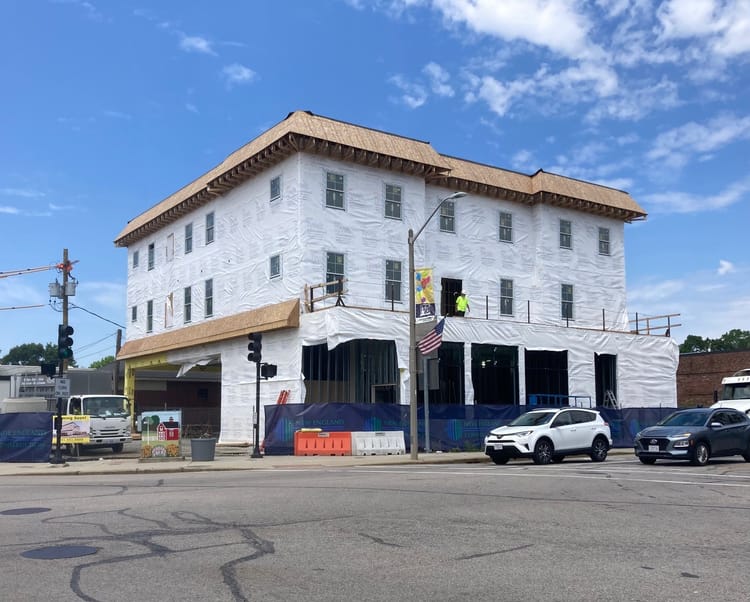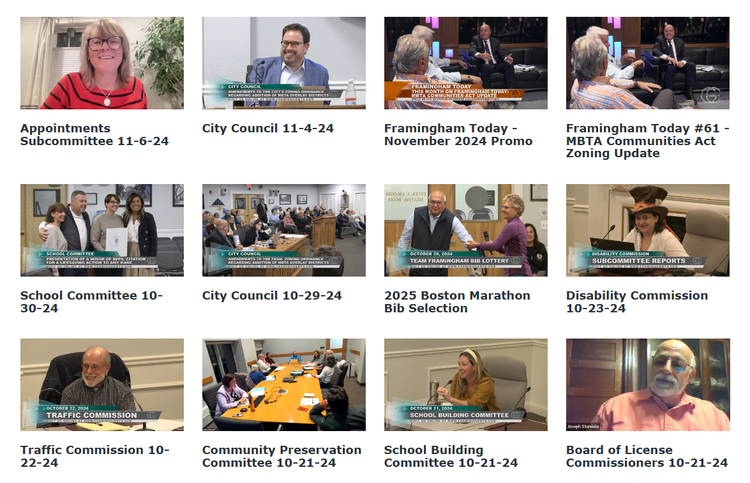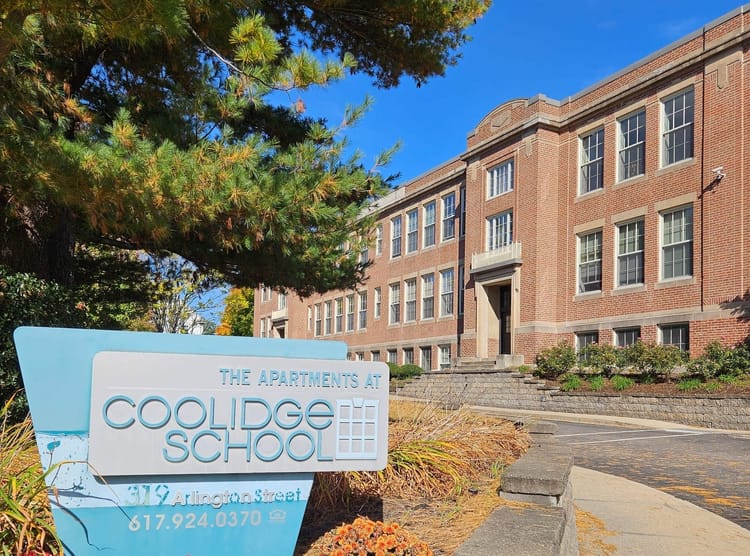The Rest Is Still Unwritten: Housing advocates gear up for another year of zoning reform

Upzone Update offers analysis of MBTA-C compliance efforts, produced by zoning expert Amy Dain and the staff of Boston Indicators. This week's article is by Amy Dain.
This spring, the MBTA Communities zoning law ushered in a historic number of municipal votes for as-of-right multifamily zoning districts, at annual town meetings. We expect an overall pause in voting for the summer, and then even more votes in fall.
Compliance Counts
There are 177 MBTA Communities total; 70 municipalities have approved zoning to come into compliance with the state zoning law so far.
The state set compliance deadlines in three waves. First, the 12 communities served by rapid transit were due to comply by the end of last year. Second, another 130 communities face a deadline of the end of this year. Finally, 35 “small towns” have a deadline at the end of next year (2025).
In the first wave, all 12 passed MBTA Communities zoning, but then Milton overturned its vote via a referendum. In the second wave, so far 55 of the 130 communities have passed zoning to comply. In the third wave, already four of the 35 small towns (Harvard, Newbury, Topsfield, Essex) have passed the zoning.
So far, the state has issued three determinations of compliance, for Arlington, Lexington, and Salem.
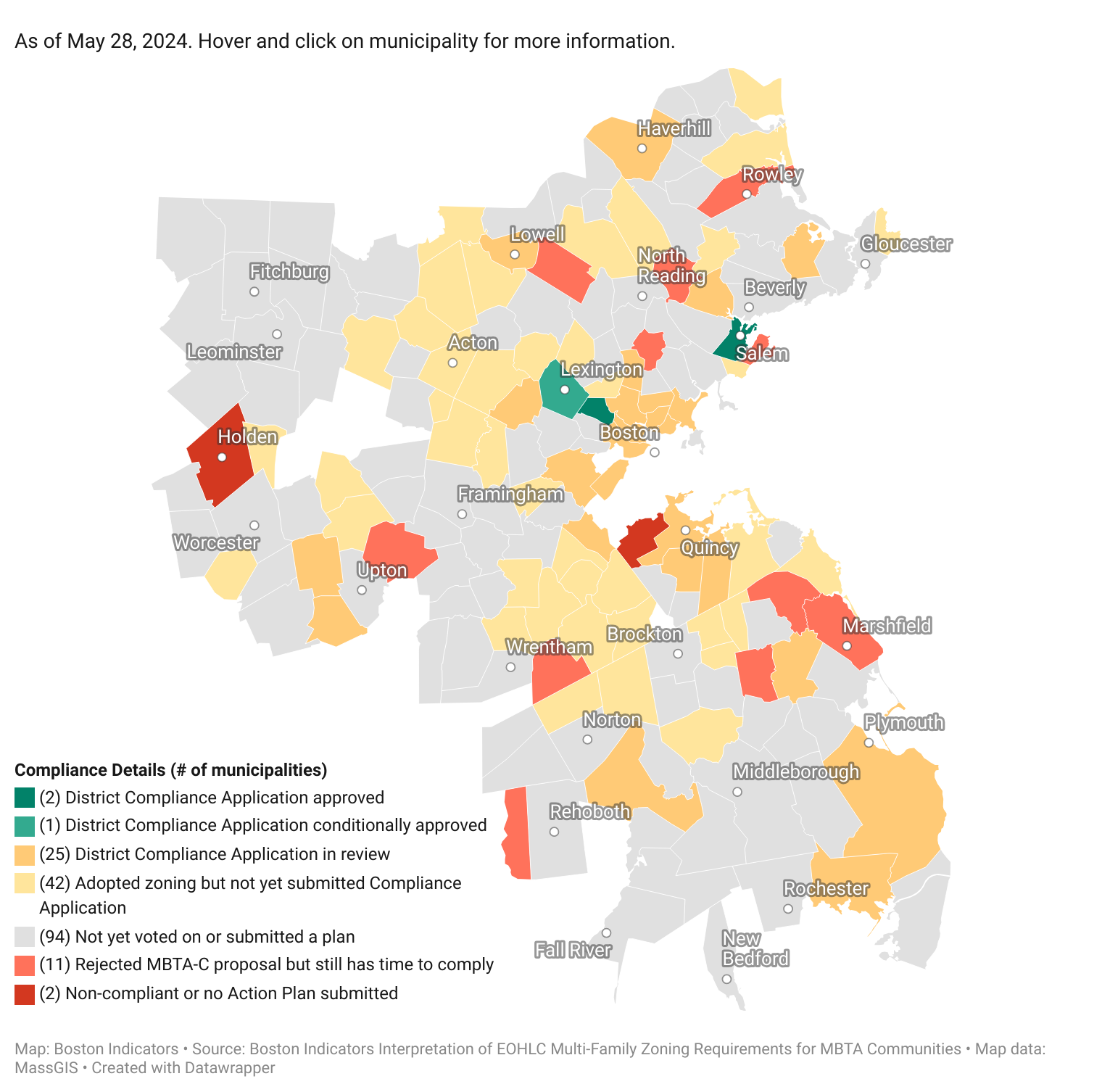
By the end of this year, another 75 communities are due to come into compliance, plus Milton which is overdue. This fall should offer a spectacle of both pretty leaves and zoning reform, not to mention the SJC case scheduled for October. See summaries of local approaches to rezoning on our Compliance Tracker page.
News Recap: Assessing Progress at the Midpoint
While implementation of MBTA Communities zoning is moving along, many people are attempting to assess the potential effectiveness of the innovative law. Last week, The Boston Globe offered two takes from different angles. Advocates and planners then weighed in with Letters to the Editor.
On the one hand, the Globe points out, in the last couple of months, approximately 50 municipalities voted for pro-housing zoning reform, an indicator of progress. There has never been a cascade of local reform like this before.
On the other hand, the law won’t come close to allowing the hundreds of thousands of homes that people need in Massachusetts. Some municipalities, for instance, are drawing districts significantly over existing multifamily housing and new development, and adding layers of requirements that would undermine the feasibility of projects. Many of the new local rules “cleverly end-run the new state mandate,” the Globe concluded.
In a Letter to the Editor, Rachel Heller of CHAPA emphasized the progress: “The MBTA Communities Act puts a new tool in the municipal toolbox, moving the multifamily development starting point to ‘yes’ in designated districts.” It is true that as-of-right zoning for multifamily housing is a new starting point for project review. For decades, municipalities favored discretionary reviews that add time, cost, and risk to the development process.
In the Globe’s critique of the law’s implementation, Norwood is held up as an example of the law’s limits. Parts of Norwood’s new districts are drawn around properties that will not be redeveloped any time soon. The article explains, “Local leaders didn’t want to pass a plan that was only compliant on paper, but they also needed to come up with something that could get approved by Town Meeting.”
In a Letter to the Editor, Elizabeth Hestad and Pat Ronan of Norwood for All, a housing advocacy group, explain that Norwood Town Meeting rejected a proposal for pure “paper compliance” and resoundingly approved (103-48) a zoning plan that is expected to yield 300 new units of housing in the coming years – a substantive achievement, beyond paper compliance.
The state guidelines set 2,045 as a zoning unit capacity target for Norwood. The zoning unit capacity targets are not production mandates, but a state standard used to determine if a multi-family zoning district is “of reasonable size,” per the language of the MBTA Communities zoning law.
In recent decades, hardly any suburbs of Boston zoned--with as-of-right permitting--for a buildout of 300 multi-family units across multiple properties. Compared to history, Norwood’s new zoning represents hard-earned progress; compared to need, it is insufficient. This is the debate among Massachusetts housing experts right now: Should we assess the MBTA Communities implementation based on far how we’ve come, or on how far we have to go?
Bob Van Meter, the chair of Acton Housing for All, responded to the Globe’s disappointment at the levels of expected buildout: “Neither those involved with these efforts at the local level nor the Executive Office of Housing and Livable Communities has ever asserted that zoning reform alone will solve the housing crisis in Massachusetts or that we will build multifamily housing to the maximum theoretical density.” This is largely true.
But, when the guidelines were first issued in 2022, several news reports mistook the new concept of “zoning capacity” for construction targets and projected that the law would lead to construction of almost 300,000 new apartments and condos. As recently as this past August, the Globe reported, “Advocates say it could unlock space for more than 100,000 new units at a time of a severe shortage.” By last August, the local zoning reform had barely started; it is hard to assess the potential buildout of zoning that has been neither mapped nor written yet.
Now that 70 municipalities have passed zoning to comply, the early assessments indicate that buildout will be significantly less than a third of total “zoning capacity” in the new districts. Of course, with another hundred-plus municipalities still deliberating reform, the book is still unwritten. Pro-housing advocacy can make a difference, which is why many organizations and agencies are ramping up staffing on this issue right now.
Van Meter observes that the state law is helping with advocacy: “As someone who has been a local housing advocate for more than 30 years, I know that the MBTA Communities law has been the single most important measure in forcing a debate in cities and towns about housing, housing affordability, and the future of our communities.” This law has not only forced debate, but it has moved municipal officials beyond general discussions to actual votes for as-of-right zoning, something that decades of state funding for local housing plans did not achieve.
Frongillo and Friends
The same day it published Van Meter’s letter, the Globe ran a feature on the pro-housing movement in Boston’s suburbs: “Suddenly, there are dozens of new local housing advocacy groups all over Eastern Massachusetts, showing up at public meetings in Norwood, Rockport, and other communities to argue in favor of new development.” Community organizers at Abundant Housing Massachusetts (AHMA) have helped launch many of these groups. AHMA is working with local leaders in approximately 20 communities.
Center stage of that Globe feature is Cobi Frongillo who helped found Building Equitable Neighborhoods, or BEN 4 Franklin, a local pro-housing group. This week, Frongillo took the mic at a pro-housing rally on the State House steps, before the AHMA lobby day. Frongillo is an elected member of Franklin’s town council; he’s been a proponent of a rail-trail and downtown Franklin planning; and he works for the state on clean energy policy. It is leadership by people like Frongillo that will change Massachusetts land use policies, for abundant housing, multi-modal mobility, and the environment.
Frongillo has a lot of partners in this work, more now than ever. This week, Governor Maura Healey and Lieutenant Governor Kim Driscoll launched a new political advocacy group, called One Commonwealth, Inc., to provide political and financial support for local housing initiatives.
Attorney General Andrea Campbell has formed a new division to enforce state and federal housing laws – by writing amicus briefs, for example, or helping advance residential development projects held up by lawsuits. This week Campbell toured cities and towns to offer support for efforts to comply with MBTA Communities; NBC10 ran a TV news report of the tour.
CHAPA launched a new statewide coalition called Affordable Massachusetts. The coalition includes business, civic, non-profit, education, faith-based and community leaders. Their goal is to see 200,000 homes built in Massachusetts by 2030. Here is a recording of their event last week.
Also, CHAPA’s Community Engagement Technical Assistance program has supported 65 municipalities in the last year and a half, and will continue this work. CHAPA’s staff reports that robust community outreach is the most important factor in determining the outcome of local zoning votes. Outreach can involve publishing web pages, holding community workshops, offering office hours or "coffee with a planner", tabling at community events, running district tours, and more.
Even PR firm Ball Consulting Group is getting in on the intensifying action, staffing a new practice area, HousingLab, to sway public opinion about housing.
Of course, builders are also weighing in on the matter; see this press release from Procopio Companies.
Spring town meetings are winding down, but clearly the pro-housing movement is ramping up. This coming autumn will be an exciting season in zoning reform, for sure.
Coming Soon: Analysis of Requirements
So far, the assessments of MBTA Communities have been based on how many communities are adopting new zoning and how much housing might result. The local zoning laws go on for pages and pages, covering all sorts of things from design standards to parking requirements to building dimensions, and many other things. There is much more work to be done looking into the details.
Keep watching this space for analysis of requirements for:
- Parking
- Inclusion of affordable homes
- First floor retail (mixed use)
- Height limits
- Other dimensional and density characteristics
- The locations of districts (such as traditional downtowns, car-oriented corridors, office and industrial parks, or residential neighborhoods)
- Permitting approval processes
Spotlight on Andover
Like Watertown and Bridgewater, featured in past editions of the Upzone Update, Andover has been taking an all-in package-approach to upgrading its historic downtown – with infrastructure investments and new zoning.
Andover has a traditional walkable vibrant Main Street, filled with boutiques, gift shops, restaurants, cafes, civic spaces, public spaces, and houses of worship. The train station is a short walk from Main Street, and the Shawsheen River is then a short walk from the train.
It is a downtown area with all of the great amenities. But, between the downtown and the train station was a sprawling concrete DPW yard, and a five-way intersection that was a nightmare for pedestrians. Between the station and the river, the sidewalks are narrow, and occasionally disappear into private parking spaces.
So, the town moved the DPW yard to the edge of town and is permitting a mixed used development that will include 165 units of housing for the location. The town is upgrading the five-way intersection into a four-way intersection, making turns into right angles, and narrowing the pavement strategically for pedestrian safety. Sidewalks will be improved, and lanterns added. And the town passed MBTA Communities zoning for a good stretch of the area, to allow for more housing.
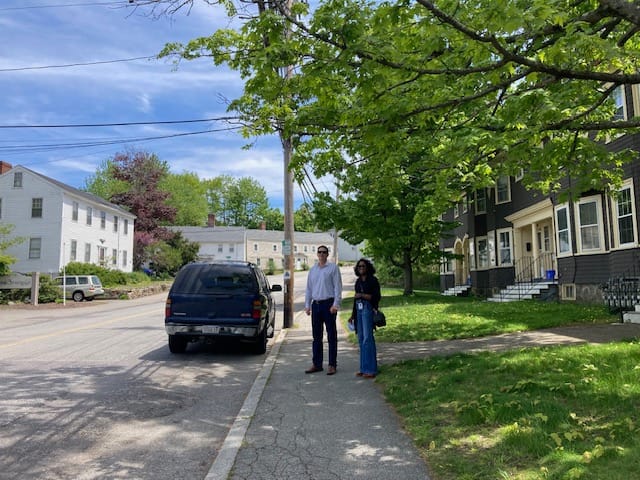
The zoning could and should be made even more permissive, to allow taller buildings, greater residential density, across even more parcels, but the zoning that passed was politically feasible and represents real progress, especially since multifamily housing is now allowed as-of-right. The MBTA Communities zoning law was key to getting the zoning reform approved by Town Meeting.
Andover’s Planning Director Paul Materazzo says that “this will be one of the most dynamic commuter rail stations north of Boston.” With all of the investments and zoning changes, he concludes, “The stage is set for the players to come.” Those looking to build homes, or move to a historic downtown, or open a shop, may want to consider downtown Andover, from Main Street to the train to the river.
And in other local zoning news...
In Gloucester, the city is working with consultants to draft zoning. By June 6, the consultants should have some zoning scenarios ready to share, and a public forum will be held on June 12.
The Patriot Ledger offers an overview of MBTA Communities zoning policies across many cities and towns south of Boston. In Hingham, the overlay districts covers existing developments such as Avalon Apartments, Hewitts Landing condos, Avalon at the Hingham Shipyard, and The Cove on Beal Street.
Woburn had considered dodging MBTA Communities requirements, but now is considering options for compliance. The Wilmington Town Crier reports that in 2022, the Woburn City Council had planned to ignore the zoning mandate. But at last week’s hearing, the mayor explained that significant funding is at stake. The Town Crier explains the strategy considered is to extend the overlay district “around pieces of land where the construction redevelopments have already recently taken place or where the construction of new housing may be viewed as impractical.”
In Swampscott, new zoning allows residences at 35 and 25 units per acre in the Essex Street and Vinnin Square overlays, respectively. Resident Terry Lorber supported the zoning, commenting, “New residential development remains the only proven method for reducing tax increases. If more people are paying property taxes, then the pressure on our tax rate can decrease.”
In Newton last night, Newton for Everyone hosted an educational forum to look at that issue: “Can new development help school budgets in cities like Newton?”

